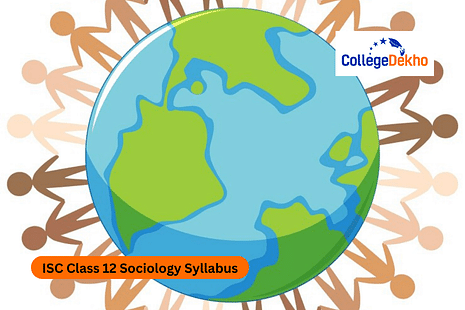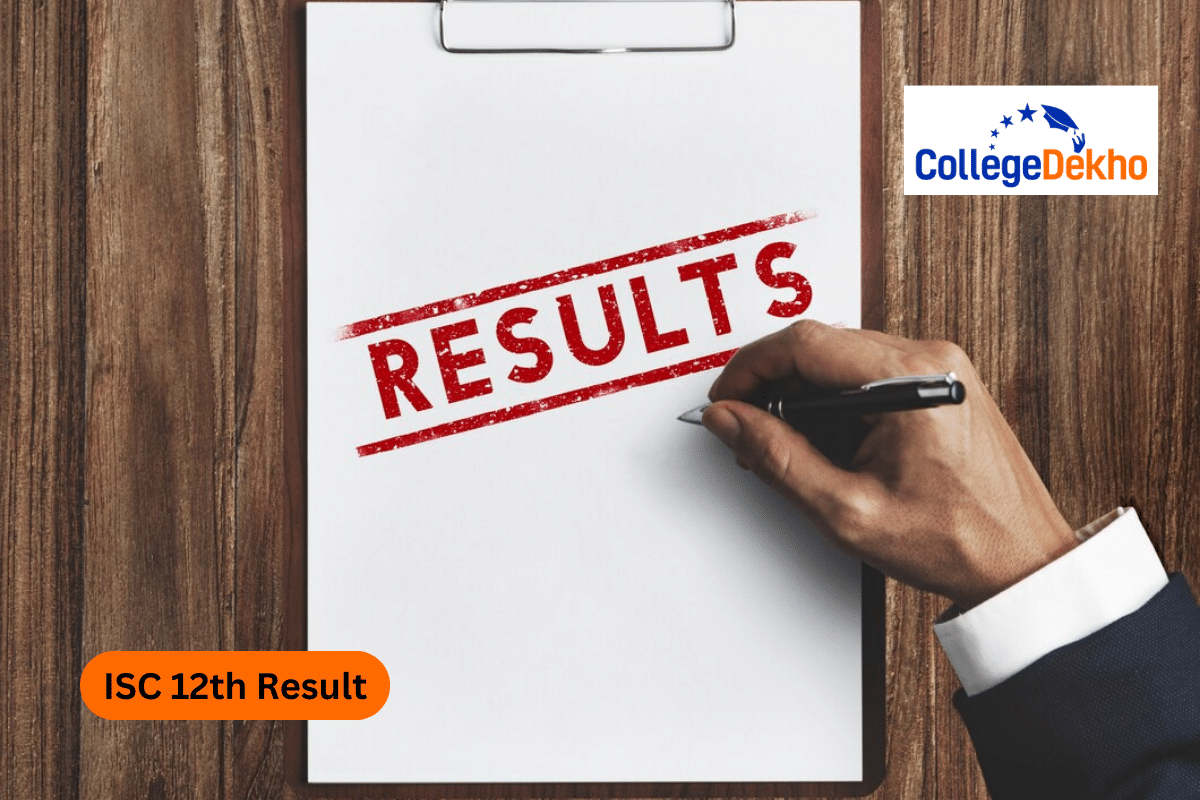

Never Miss an Exam Update
ISC Class 12 Sociology Syllabus 2025-26 PDF is available online. The board has provided the syllabus on its official website. There are 7 chapters in total which include different topics. The students can refer to the latest syllabus while preparing for the ISC 12th Board 2025-26 exams. All the chapters should be prepared according to the time table. By fixing specified duration to each chapter, students can complete the syllabus in time. They can also try to solve the questions related to the exercises for each chapter. In addition, students can also refer to the ISC 12th Exam Pattern 2026 and get an idea of the types of questions appearing in exams. Go through the article in detail to know the chapters in detail and prepare the syllabus.
ISC Class 12 Sociology Syllabus 2025-26 PDF
The sociology subject for ISC Class 12 is large and difficult. It includes a significant practical component that enables students to use their theoretical knowledge in actual situations. It covers a wide range of topics, from the fundamentals to the advanced. ISC Class 12 Sociology Syllabus 2025–26 PDF is available for download. Also Read - ISC 12th Time Table 2026ISC Class 12 Sociology Syllabus 2025-26
Students can check the detailed syllabus for ISC Class 12 Sociology below.Chapter | Sections |
|---|---|
| Social Institutions | (i) Definition and features of Social Institutions. Self explanatory. (ii) Types of Social Institutions: Kinship, Marriage and Family The definition of kinship, Consanguineous and affinal kinship are two different types. Primary, secondary, and tertiary kinship; matrilineal and patrilineal descent; and matrilocal, patrilocal, and avunculocal residency Discuss kinship terminology that are used to describe and classify kinship, including avoidance, humorous relationships, teknonymy, avunculate, amitate, and couvade. Definition, merits, demerits, functions of the following: • Exogamy and endogamy (clan, gotra, pravara, village, and sapinda), parallel and cross cousins, levirate, sororate, hypergamy, and hypogamy are among the rules of marriage. • Polygamy (polyandry and polygyny), monogamy are two types of marriage. Family: definition and features (MacIver’s features); Functions of family to be discussed explaining the reasons for its universal existence. Types of family: consanguineous and conjugal family (family of origin and procreation), matriarchal and patriarchal family (matripotestal, patripotestal and avuncupotestal), nuclear and joint families. |
| Religion and Society | (i) The definition of religion and ideas of superstition, superstition, and taboo. Definitions and an introduction to each of the aforementioned concepts. Religion and science: their differences and similarities. (ii) Religious doctrines like totemism, animism, and naturism. A brief examination of functional theories (Malinowski, Radcliffe Brown, and Durkhiem) with animism, naturism, and totemism. iii) Functions and dysfunctions of religion. A brief discussion on the positive and negative functions of religion. (iv) Social control and morality. Relationship between religion, morality, and social control; definition of morality and social control; moral and religious codes. |
| Political Organization | Political structure and its function in bringing about social change. Discuss the 73rd Constitution Amendment Act, Bal Panchayats, the definition of a political organization, Panchayati Raj, and the role that each plays in the empowerment of women and children. |
| Economic Organization | (i) Economic Organisation Economic structure, economics, and free goods are defined. Food gathering, agriculture, shifting axe farming, handicrafts, pastoralism, and industrial labor are some of the Indian tribes' economies. Indian tribes' economies consist of: (i) food gathering; (ii) agriculture: shifting axe cultivation (jhum, dahi, koman, penda, podu, and bewar), criticism of this type of cultivation, examples of tribes engaging in this practice; (iii) handicraft making; (iv) pastoralism; and (v) industrial labor, which includes the migration of numerous Santhal, Kond, and Gond to tea gardens in the north-east; abundant (iii) Rural employment, the Jajmani system, and the agrarian economy. Land relations: owner, renter, and share cropper in an agrarian economy. Jajmani system: exchange of services and caste-based employment. A quick explanation of MGNREGA and its effects. (iv) Traditional Markets To be discussed with respect to Weekly markets, barter exchange. |
| Tribal India- Past, Present and Future | (i) Definition of tribe, features. Definition of a tribe and its characteristics, including its unity and self-sufficiency, clan and family, shared totemic ancestor, territory, occupation, endogamy, dormitories, language, common culture, common name, shared religion, political organization, and territory. (ii) Tribal Indian dormitories Definition; history of dormitories; characteristics and purposes; interaction and transformation of cultures in dormitories. (iii) Present conditions, problems and solutions. Conditions and issues in the areas of economics, politics (regionalism and separatist), social issues, and culture. Discuss the following government of India policies towards the advancement of the Indian tribes in brief (post-independence): Important constitutional protections for the tribal Panchsheel: key Committees and Commissions: Commission for Backward Classes; Special Central Assistance; Economic initiatives and resources: Large Sized Multi-Purpose Cooperative Societies (LAMPS), the 20 Point Programme, the Programme for Encouragement in Crafts, Home Industries, and Agriculture, and Educational Policies are some of the programs that promote rural development. |
| Social Stratification | (i) The components of social stratification. What social stratification, characteristics, inequality, and difference mean. (ii) Class: The nature, history, and several classes that make up the class system. Briefly describe the evolution and characteristics of the various classes (lower, middle, upper). (iii) Caste: Definition, history, comparison of castes and classes, and characteristics of the caste system. Definition, divine origin theory, and caste traits. Only definitions of social mobility, brahminization, and westernization are provided. (iv) Gender: The distinction between gender and sex, patriarchal ideology, and the position of women in independent India. The distinction between gender and sex, gender bias, and its effects on men and women in the workplace, on property rights, and in terms of family status. Gender-related problems include female infanticide, foeticide, dowry, sati, child marriage, domestic violence, rape, widowhood, and sexual harassment, as well as women who use violence as a form of self-defense. |
Social Change and Development | (i) Social Development and Change Social change and development definition: characteristics and sources. (ii) Developmental Elements Definitions and their impact on societal transformation of industrialization, urbanization, modernisation, globalization, and sustainable development. the connection between social change and development, with a focus on ecological and environmental challenges for enhancing both present and future generations' quality of life. (iii) Social movements: their objectives, causes, and social implications. (iv) Role of Education in creating Social change. The purpose and role of education. Insist on the importance of education in bringing about social transformation. To briefly examine the Right to Education (RTE) and its ramifications. (v) Role of Mass Media in creating Social change The function of mass media (print, electronic, and audiovisual; pros and cons of mass media). Knowing how each of the aforementioned mass media outlets contributes to social change and how to use them to build a civil society that challenges the bureaucracy and authoritarianism of the state apparatus through vigils, NGO activities, and actions like the Right to Information (RTI). |
ISC Class 12 Sociology Practical Work 2025-26
The details of practical work are added below.Project undertaken during the academic year at school level (15 Marks) |
|---|
|
1. Introduction -2 Marks
2. Statement of Purpose – 2 Marks 3. Research Question – 2 Marks 4. Methodology – 3 Marks 5. Data Analysis – 4 Marks 6. Conclusion – 2 Marks |
Viva – based on the project work ( 05 Marks) |
After completing the syllabus, students can start solving the previous year question papers which will further help them to understand the pattern and marking scheme of the subject.
Are you feeling lost and unsure about what career path to take after completing 12th standard?
Say goodbye to confusion and hello to a bright future!

FAQs
To complete the ISC Class 12 Sociology Syllabus 2025-26, students should focus on each chapter. The chapters with the high marks can be given more attention. After completing the chapters, students should solve the questions. Good understanding of the chapters will make it possible for them to answer all the questions.
The students can cover up the ISC Class 12 Sociology Syllabus 2025-26 and figure out the important topics as per the marks allotted to the chapters. Accordingly, they can solve more questions from the chapters with the high marks. They can solve the sample papers and previous year question papers to know the types of questions. The repeated questions should be paid more attention.
After completing the ISC Class 12 Sociology Syllabus 2025-26, students should revise all the chapters once again. They should download the sample papers and previous year question papers in order to solve the questions. The students can solve a variety of questions and get familiar with the question pattern.
The students should start preparing to complete the ISC Class 12 Sociology Syllabus 2025-26 from the beginning. By regularly going through the chapters, it will be easy for them to understand the topics and cover up the entire syllabus in time.
After completing the syllabus, students should start solving the questions from the ISC Class 12 Sociology Syllabus 2025-26. With the knowledge of the topics, it will be easy for them to answer all the questions.
Was this article helpful?

















